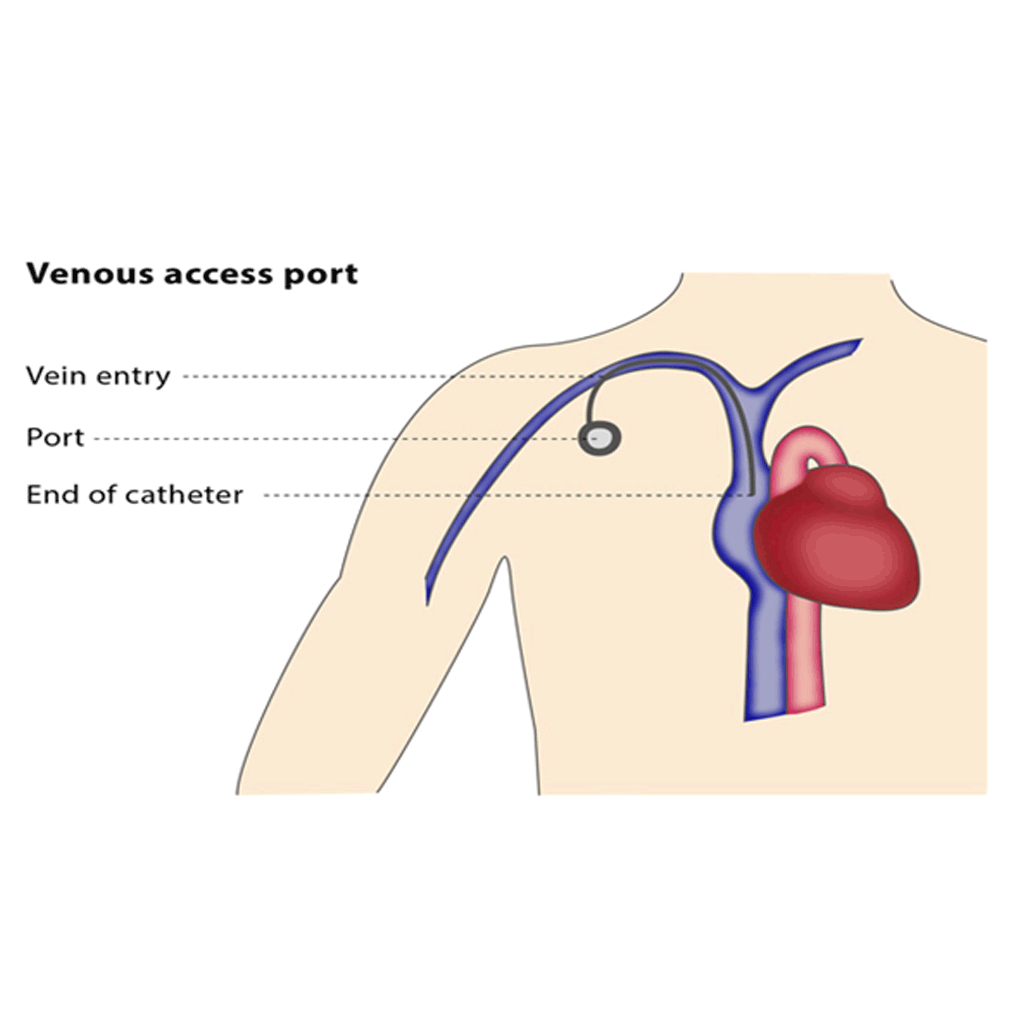VENOUS ACCESS PORTS
Patient Education Material
A venous access port is a central venous access device that allows doctors to easily access your veins to give treatments and to take blood. It is made of a non-irritant material and is designed to be inserted under your skin and remain in place for weeks or months. It is also known as a subcutaneous infusion port, and includes a catheter (a thin hollow tube), which is inserted through the skin and is then connected to a port in a pocket under the skin.
Venous access ports are commonly used in the care of patients with chronic liver disease, particularly cancer patients, and are considered an integral part of cancer therapy. The port provides reliable access for taking blood, blood transfusions and administering nutrition, fluids and medication with minimal disruption to the patient’s lifestyle. The venous access ports used today are light and can be used during imaging procedures.
The procedure for implanting a venous access catheter is performed on an out-patient basis, under fluoroscopic guidance. In most cases, the port is inserted into the patient’s upper chest or arm. The interventional radiologist will access the vein under ultrasound guidance using a thin needle. The right internal jugular vein, which collects blood from your brain, face and neck, is the preferred vein for this as the risk of blood clots and pneumothorax (collection of air or gas in the space between the lung and the chest wall) is lower.
Once the interventional radiologist has accessed the vein, they will use a guidewire to introduce a sheath and create a small pocket under the skin in the chest area. The catheter is then tunnelled to the vein and the port is connected to the catheter and placed in the pocket. Most physicians prefer to wait a week before starting to use the port. The wall of the port can be used for approximately 2000 punctures.

The procedure is ideal for patients in need of long-term yet intermittent intravenous access. These patients typically receive chemotherapy or transfusions on a weekly or monthly basis and are unable to use a catheter inserted into a vein in the arm or hand.
Although the placement procedure is more complex and invasive than the more common technique of inserting a catheter into a vein in the hand or arm, central venous access ports reduce the restrictions on patient’s daily activities, such as bathing, swimming and other forms of exercise. A venous access port has a lower risk of being dislodged than a catheter in the arm or hand. The port also requires fewer injections of heparin and fewer dressing changes. Because it is beneath the skin, it has an aesthetic advantage as well as a decreased risk of infection. Although venous access ports are expensive, the maintenance costs and risk of infection are low.
Kindly contact:
- One PKLI Avenue, DHA, Phase-6, Lahore, Pakistan.
- info@pkli.org.pk
- +92 42 111 117 554

